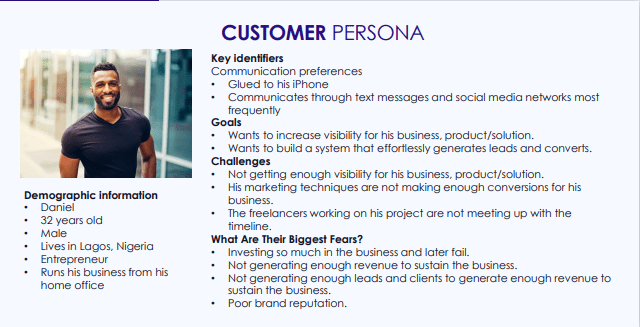In today’s highly digitalized world, it is no longer news that social media has come to stay. Because of the key role it plays in our present society, social media marketing has become an essential component of the marketing strategy for many businesses. While this has brought about tremendous benefits for businesses, creating a successful social media marketing plan that delivers engaging and shareable content is not an easy task, and is one that keeps changing with the times.
In this article, we will discuss the steps necessary to develop a social media marketing plan that will help you reach your target audience, achieve your marketing goals, and generate valuable engagement and shares.
Before we delve properly into the how of creating a social media plan with highly engaging and shareable content for your business, it is important for us to first outline the various steps.
- Understand your audience
- Set your social media marketing goals
- Craft your brand’s social media voice and tone
- Conduct a content audit
- Develop a content strategy
- Create engaging and shareable content
- Optimize content for social media platforms
- Measure and analyze results
1. Understanding Your Audience
The first step in developing a successful social media marketing plan is understanding your target audience. Understanding your target audience gives you a clear understanding of who they are, where they congregate, how best to communicate with them, and through what channel.
To do this, you need to determine what their needs are, and how they prefer to interact with your brand. You can start by creating buyer personas, which are fictional representations of your target audience that help you better understand their characteristics, behaviors, and preferences. Highlight their painpoints, needs, dreams, etc. using this worksheet.

Analyzing Audience Behaviors and Preferences
Once you have defined your target audience, you need to analyze their behaviors and preferences on social media. You can do this by conducting market research and using social media analytics tools to gather data on what content your audience is engaging with, what topics they are interested in, and what platforms they are most active on.
While conducting this research, it is important to highlight and identify their pain points and interests. This will help you create content that resonates with your audience and addresses their needs. You can do this by conducting surveys, monitoring social media conversations, and analyzing customer feedback.
2. Setting Social Media Marketing Goals
In developing a highly effective social media plan, the number one rule of thumb before you start creating content is to set clear, measurable, achievable, relevant, and time-bound (SMART) goals for your social media marketing plan. These goals should align with your business objectives and help you track your progress toward achieving them.
To ensure that your social media marketing goals align with your business objectives, you need to define how social media can help you achieve those objectives. For example, if your business aims to increase sales, your social media goal may be to generate more leads and conversions.
Once you have defined your social media marketing goals, you need to select the social media platforms that align with those goals. You don’t need to be present on every social media platform; instead, focus on the platforms where your target audience is most active and where you can achieve your marketing goals most effectively.
3. Crafting Your Brand’s Social Media Voice and Tone
Your brand’s social media voice and tone refers to the personality, emotion, and style you use on your social media channels to convey information about your brand.
It’s important to have a consistent voice and tone across all of your brand’s social media channels because it helps people recognize, understand, and connect with your brand, and it also differentiates you from competitors, stand out from the crowd, and builds long-term relationships with customers.
If your company uses humor in its marketing campaigns, for example, then make sure that humor carries over into other parts of your marketing efforts including your social media content. So that people don’t feel like they’re being sold something they didn’t want or expect.

To develop a brand persona for your social media, you need to define your brand’s unique attributes, such as its personality, tone of voice, and visual identity.
Determining the Appropriate Voice and Tone
The appropriate voice and tone for your social media will depend on your target audience, brand personality, and social media platform. For example, if you’re targeting a younger audience on TikTok, your voice and tone should be more playful and informal than if you’re targeting a professional audience on LinkedIn.
To ensure consistency in your social media content, you should create a style guide that outlines your brand’s social media voice and tone, as well as guidelines for formatting, language, and visual elements.
4. Conducting a Content Audit
This involves analyzing your past posts to identify the content that generated the most engagement, shares, and conversions.
By identifying high-performing content, you can determine what types of content are resonating with your audience and use that information to inform your future content strategy.
A content audit can also help you identify gaps in your content strategy and areas for improvement. For example, you may find that you’re not posting enough video content or that your content is not optimized for a particular social media platform.
5. Developing a Content Strategy
To ensure that your social media content is consistent and aligned with your social media marketing goals, you need to create a content calendar.
A content calendar is a schedule of when and what type of content you will be posting on each social media platform.

GET A FREE COPY: Social media marketing calendar template
Get your free copy of Effe Towers social media marketing calendar template and develop a thoughtful and strategic content calendar for your business.
Create your own social media calendar.
When developing your content strategy, you should also determine the themes that you will be focusing on in your content. These themes should be aligned with your social media marketing goals and your target audience’s interests and pain points.
To keep your content fresh and relevant, you should also incorporate trends and news events into your content strategy. This will help you stay current and provide your audience with valuable and timely content.
6. Creating Engaging and Shareable Content
To capture your audience’s attention and encourage them to engage with your content, you need to write attention-grabbing headlines. Your headlines should be concise, descriptive, and intriguing, and should communicate what your content is about.
Utilize Visual Content
Visual content, such as images and videos, is more engaging and shareable than text-only content. Incorporating visual content into your social media marketing plan can help you capture your audience’s attention and communicate your message more effectively.
Create Interactive Content
Interactive content, such as quizzes, polls, and contests, can also be effective in engaging your audience and encouraging shares. Interactive content allows your audience to participate in the conversation and feel more connected to your brand.
Incorporate User-Generated Content
User-generated content, such as customer reviews, testimonials, and photos, can also be effective in engaging your audience and encouraging shares. User-generated content adds a personal touch to your social media marketing and can help build trust and credibility with your audience.
7. Optimizing Content for Social Media Platforms
Each social media platform has its unique audience, features, and best practices. To ensure that your content is optimized for each platform, you should customize your content for each platform. For example, Instagram posts should be optimized for the square image format, while Twitter posts should be optimized for short, concise messaging.
Utilizing Hashtags and Keywords

Hashtags and keywords are essential in helping your content get discovered on social media. You should use relevant hashtags and keywords in your social media posts to increase visibility and engagement.
Scheduling Posts at Optimal Times
Posting your content at the optimal times when your audience is most active can help increase engagement and shares. You can use social media analytics tools to determine when your audience is most active and schedule your posts accordingly.
8. Measuring and Analyzing Results
To measure the success of your social media marketing plan, you need to identify relevant social media metrics, such as engagement rate, reach, and conversion rate. These metrics will help you evaluate the effectiveness of your social media content and make data-driven decisions.
By analyzing your social media metrics, you can evaluate the success of your social media marketing plan and identify areas for improvement. You should regularly analyze your social media data and adjust your content strategy accordingly.
To ensure that your social media marketing plan continues to deliver engaging and shareable content, you should make data-driven adjustments based on your social media analytics. This includes testing different types of content, adjusting your content calendar, and optimizing your content for each social media platform.
Conclusion
In today’s digital age, social media has become a crucial part of any business’s marketing strategy. Developing a social media marketing plan that delivers engaging and shareable content is essential in building brand awareness, driving website traffic, and increasing conversions.
To create a successful social media marketing plan, you need to start by defining your social media marketing goals and identifying your target audience. From there, you can develop a content strategy that incorporates a content calendar, content themes, trends, and user-generated content.
By following these steps, you can develop a social media marketing plan that delivers engaging and shareable content, builds brand awareness, and drives conversions. Remember to stay up-to-date on the latest social media trends and best practices, and to regularly evaluate and adjust your content strategy based on your social media metrics.

Get your FREE Marketing Plan Template
And start marketing like a pro.
Saves you at least 9 hrs + of time, is easy to use, and puts everything in one place.
If you need professional assistance, at Effe Towers, we specialize in social media management services that deliver engaging and shareable content across multiple social media platforms. Our team of experts will work with you to develop a customized social media marketing plan that aligns with your business goals and targets your ideal audience.
Whether you’re looking to build your brand, increase your online presence, or drive more conversions, our social media management services can help. Contact us today to learn more about how we can help you achieve your social media marketing goals and take your business to the next level.




